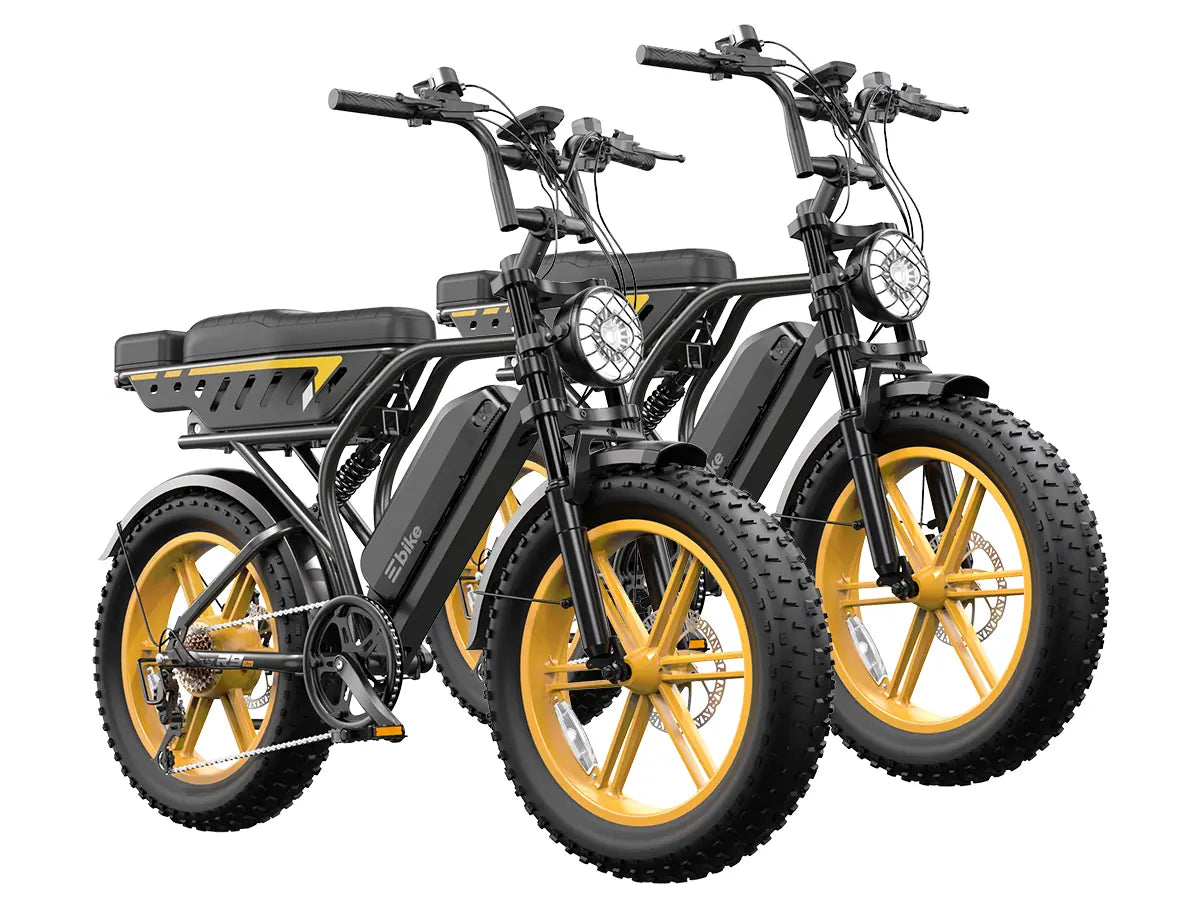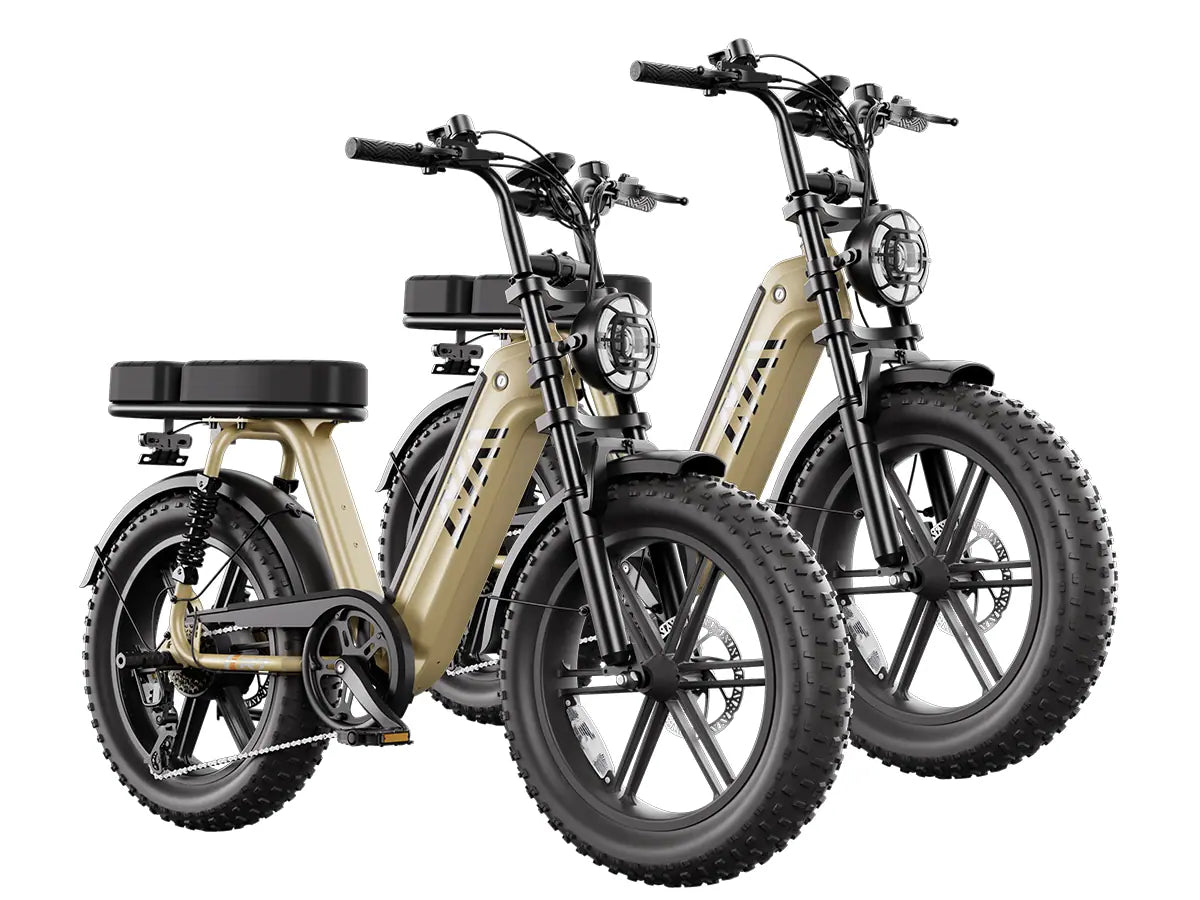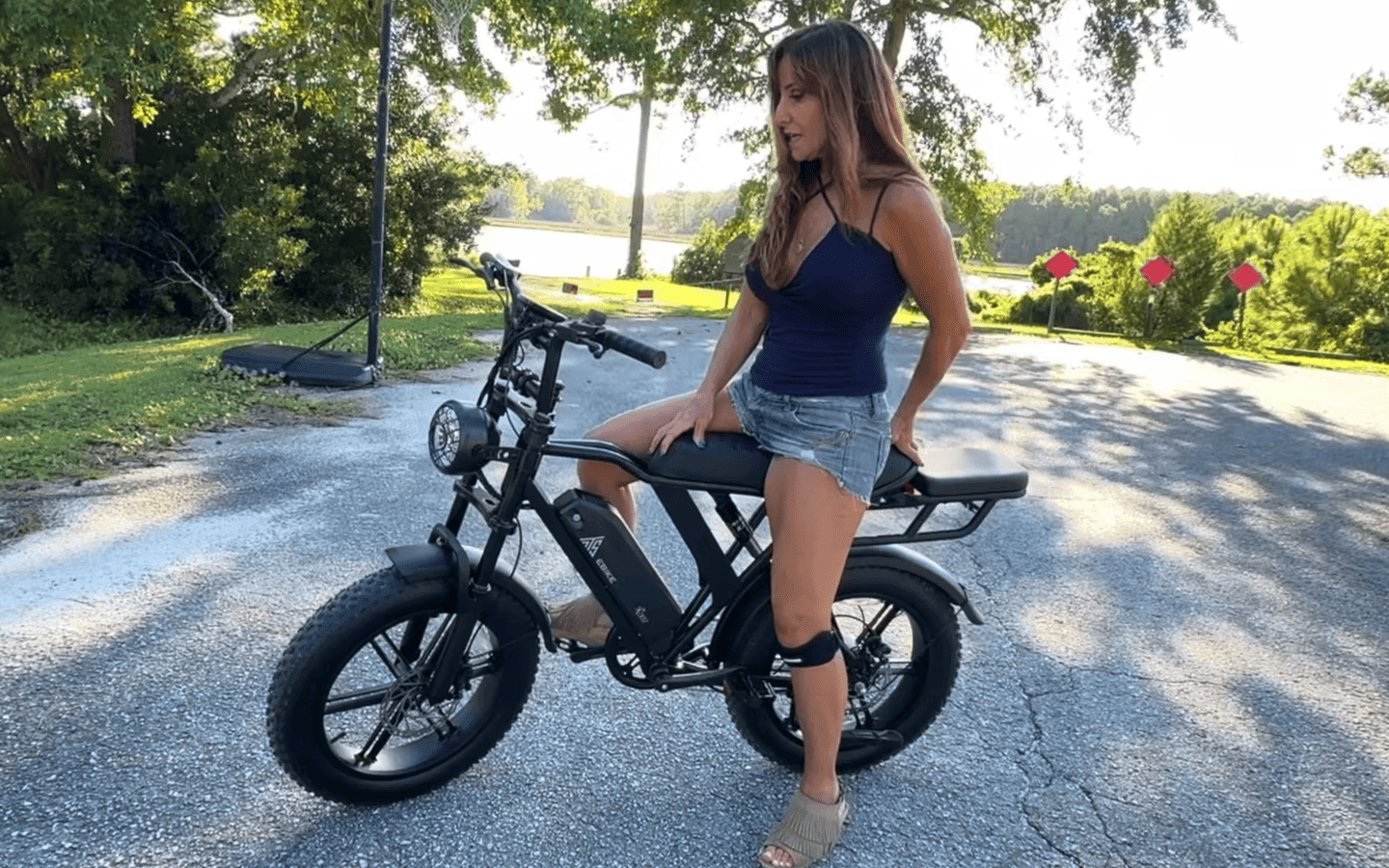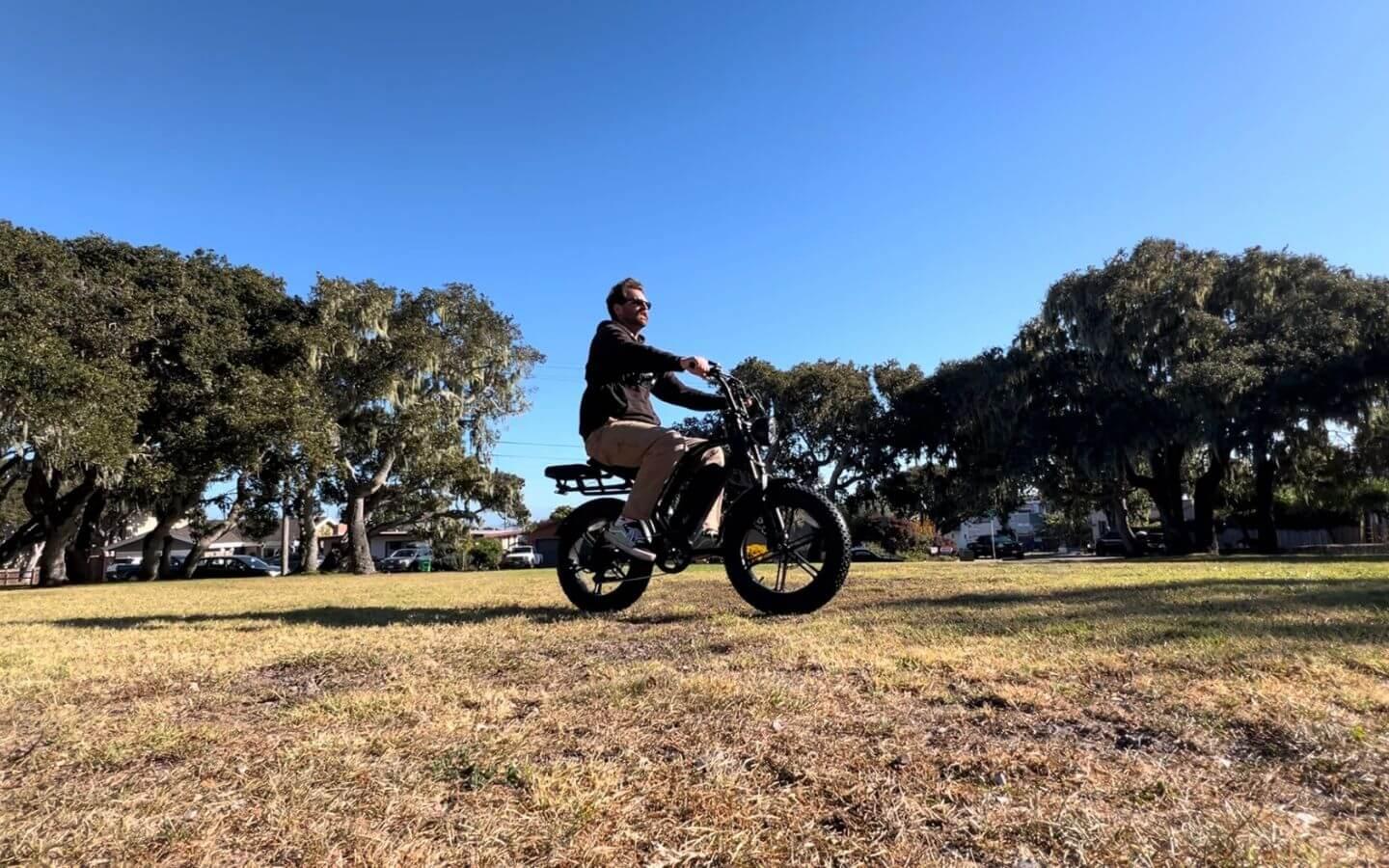Using an e-bike during winter can lower your heating bills by keeping you active and warm, reducing reliance on home heating systems, and cutting transportation costs. E-biking encourages outdoor activity, which generates body heat, while replacing car trips with electric-powered rides saves fuel expenses. Pairing e-bikes with renewable energy sources further enhances savings and sustainability. Also check TST Ebike Moped-Style EBike Collection
How Does Staying Active on an E-Bike Reduce Home Heating Costs?
Riding an e-bike in winter naturally raises your body temperature through physical activity, which helps you stay warm without turning up the thermostat. This increased circulation means you can comfortably lower your home’s heating settings, directly reducing energy consumption and heating bills. Wearing thermal cycling gear like insulated gloves and windproof jackets optimizes warmth during cold rides, making this strategy more effective.
What Transportation Cost Savings Do E-Bikes Offer in Winter?
Winter driving increases fuel consumption, tire wear, and maintenance costs. By substituting short car trips with e-bike rides, you can save significantly on fuel and upkeep. For example, car fuel costs average about \$0.15 per mile, while e-bike electricity costs are roughly \$0.01 per mile, translating to potential monthly savings of around \$90 for a 10-mile daily commute. This reduction in vehicle use also lessens wear and tear on your car during harsh weather.
Transportation Cost Savings Chart
| Mode of Transport | Cost per Mile | Monthly Cost (10 miles/day) |
|---|---|---|
| Car (Fuel) | $0.15 | $45 |
| E-Bike (Electric) | $0.01 | $3 |
| Monthly Savings | $42 |
How Does Spending More Time Outdoors on an E-Bike Affect Heating Usage?
Using an e-bike promotes outdoor activities, which reduces the time spent indoors where heating systems run continuously. Less indoor time means fewer hours of heater use, lowering overall energy consumption. This behavioral shift, combined with the warmth generated from riding, helps households cut down on winter heating costs naturally.
Can Renewable Energy Integration Enhance E-Bike Savings?
Pairing your e-bike with a home solar charging station maximizes cost savings and environmental benefits. Solar panels generate clean, free electricity during the day, allowing you to charge your e-bike without drawing from the grid. This reduces fossil fuel dependence and further decreases your overall household energy expenses, making winter commuting more sustainable and affordable.
Which TST EBike Models Are Ideal for Winter Riding and Cost Savings?
TST EBike models like the Defender 26 and Explorer Fat Tire excel in winter riding due to their robust fat tires and durable frames that handle snow and ice effectively. These models offer efficient battery use, helping riders save on energy costs during colder months. Their reliable motors and traction features provide safety and control, making them perfect for winter commuters who want both performance and cost-efficiency in challenging conditions.
TST EBike offers models designed for winter conditions and efficiency:
- 26-inch TST EBike Model: Suited for rough terrains like snow and sand, this model features fat tires and robust power, providing stability and reliable performance in winter weather.
- 27-inch TST EBike Model: Ideal for daily commuting and mountain biking, it balances speed and comfort with puncture-resistant tires and efficient battery use for cold-weather rides.
Both models support long-range batteries and durable frames, ensuring dependable winter transportation that helps reduce heating and commuting costs.
TST EBike Winter Model Comparison Chart
| Feature | 26-inch Model | 27-inch Model |
|---|---|---|
| Terrain Suitability | Snow, sand, rough terrains | Commuting, mountain biking |
| Tire Type | Fat tires | Puncture-resistant tires |
| Battery Range | 40-60 miles | 40-60 miles |
| Winter Performance | Excellent stability | Agile and efficient |
Why Is E-Biking a Practical Strategy for Winter Cost Management?
E-biking reduces reliance on costly heating by promoting physical warmth and outdoor activity, cuts fuel and maintenance expenses by replacing car trips, and integrates well with renewable energy solutions to minimize electricity costs. This multifaceted approach not only lowers winter heating bills but also improves health and sustainability.
Buying Tips
When choosing an e-bike to reduce winter heating costs, consider:
- Terrain adaptability: Opt for the 26-inch TST EBike model for snow and rough terrain or the 27-inch model for urban winter commuting.
- Battery capacity: Ensure a long-range battery to handle cold-weather rides without frequent charging.
- Tire quality: Select fat or puncture-resistant tires for better grip on slippery surfaces.
- Winter gear compatibility: Invest in thermal cycling apparel to stay warm during rides.
- Renewable charging options: Pair your e-bike with solar charging for maximum savings.
- Brand reliability: Choose TST EBike for quality control and consumer-driven design.
Winter brings many challenges, from icy roads to skyrocketing heating bills. As energy consumption peaks, many households struggle to manage increased expenses. But did you know that incorporating an electric bike (e-bike) into your daily life can help reduce your winter heating costs? This sustainable and practical solution not only saves on commuting expenses but also offers indirect benefits for your home energy bills.
The Impact of Winter Heating Costs
During winter, heating can account for up to 50% of household energy use, with monthly bills increasing by 30–50%. Staying indoors more often leads to higher electricity and heating usage, further driving up costs. Reducing indoor time and adopting outdoor activities like e-biking can mitigate these expenses.
Rising Energy Bills
During the cold months, heating can account for up to 50% of household energy use in colder climates. Families often see their monthly utility bills increase by 30-50% compared to other seasons.
| Month | Average Heating Bill |
|---|---|
| October | $120 |
| November | $200 |
| December | $300 |
| January | $350 |
These figures highlight the significant financial burden that heating places on households during winter.
The Hidden Costs of Staying Indoors
When we stay indoors to escape the cold, we tend to use more electricity and heating. Appliances like heaters, electric blankets, and ovens are used extensively, further driving up energy consumption. Reducing indoor time and adopting outdoor activities like e-biking can mitigate these costs.
How E-Bikes Can Lower Your Heating Costs
E-biking in winter generates body heat, reducing reliance on home heating. Replacing short car trips with e-bike rides cuts transportation expenses, and spending more time outdoors decreases indoor energy consumption. Charging e-bikes with renewable energy sources like solar panels further enhances savings.
1. Stay Active, Stay Warm
Riding an e-bike in winter naturally generates body heat, reducing your reliance on home heating systems. Physical activity increases circulation and keeps you warm even after your ride. This means you’ll likely lower your thermostat settings, saving on energy bills.
Pro Tip:
Invest in thermal cycling gear to enhance warmth and comfort during winter rides. Insulated gloves and windproof jackets are must-haves for winter e-biking.
2. Cut Transportation Costs
Car ownership becomes more expensive in winter due to higher fuel consumption, tire replacements, and cold-weather maintenance. By replacing short car trips with an e-bike, you can save hundreds of dollars monthly.
Savings Breakdown:
- Car fuel cost per mile: $0.15
- E-bike electricity cost per mile: $0.01
- Potential Monthly Savings: $90 (assuming a 10-mile daily commute).
3. Spend Less Time at Home
Using an e-bike encourages outdoor activities, which reduces your reliance on heating systems at home. Less time indoors means fewer hours with heaters running, cutting down on energy consumption.
4. Use Renewable Energy Sources
Pair your e-bike with a home solar charging station to maximize savings. Solar panels generate clean energy, which you can use to charge your e-bike for free during the day. This strategy enhances sustainability and reduces dependence on fossil fuels.
Practical Winter E-Bike Tips
Equip your e-bike with fenders to prevent splashes, studded tires for better traction, and store the battery indoors to maintain optimal temperature. Wear thermal and waterproof clothing, use heated gloves, and install bright LED lights for improved visibility during shorter winter days.
Equip Your E-Bike for Cold Weather
To ensure a smooth and safe ride during winter, it’s essential to upgrade your e-bike with the right accessories:
- Fenders: Prevent mud and snow from splashing onto your clothes.
- Studded Tires: Enhance traction on icy roads.
- Battery Maintenance: Store your e-bike battery indoors to keep it at optimal temperature.
Optimize Your Riding Experience
- Layer up with thermal and waterproof clothing.
- Use heated gloves and insulated shoe covers for added warmth.
- Install bright LED lights for improved visibility on shorter winter days.
E-Bike Recommendations for Winter
Choose e-bikes with high-torque motors, fat tires for stability on snow, and long-lasting batteries that perform efficiently in low temperatures. Models like the TST R002 Moped-Style E-Bike are designed to withstand cold weather conditions, ensuring a reliable winter riding experience.
Not all e-bikes are equally suited for winter conditions. Models like the TST R002 Moped-Style E-Bike are built to withstand cold weather with features like powerful motors and durable tires.
Key Features to Look For:
- High Torque Motors: Ensure smooth rides on slippery surfaces.
- Fat Tires: Provide extra grip and stability in snow.
- Long-Lasting Batteries: Perform efficiently even in low temperatures.
Additional Benefits of E-Biking in Winter
Winter e-biking boosts mental health by increasing exposure to natural light, combating seasonal affective disorder. It also reduces environmental impact by lowering greenhouse gas emissions compared to car usage, contributing to a more sustainable lifestyle.
Boost Your Mental Health
Winter often brings shorter days and less sunlight, leading to seasonal affective disorder (SAD) for some individuals. Riding an e-bike outdoors can improve mood and increase exposure to natural light, promoting overall well-being.
Reduce Environmental Impact
By choosing an e-bike over a car, you contribute to reducing greenhouse gas emissions. This small lifestyle change can make a big difference for the planet while saving money.
Conclusion
E-bikes are more than just a sustainable commuting option—they’re a tool to save money and improve your lifestyle during winter. From cutting transportation costs to reducing your reliance on home heating systems, the benefits are clear. By embracing e-biking, you can lower your winter expenses while staying active and eco-conscious.
Ready to experience the difference? Check out our TST R002 Moped-Style E-Bike today and make this winter your most cost-efficient one yet.































Leave a comment
All comments are moderated before being published.
This site is protected by hCaptcha and the hCaptcha Privacy Policy and Terms of Service apply.